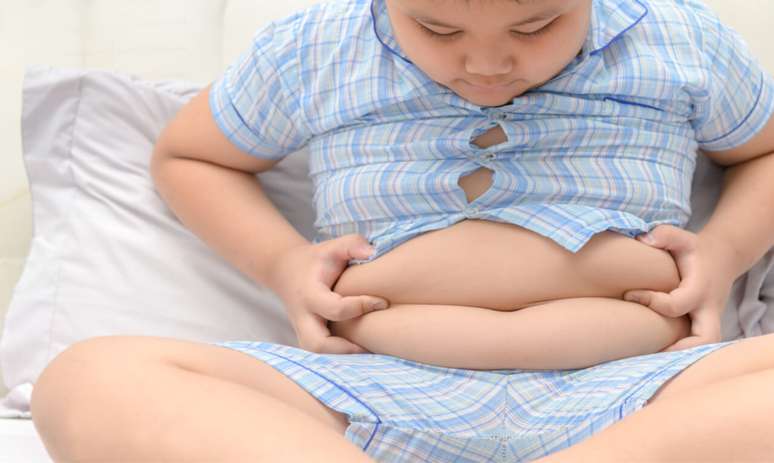Childhood obesity is a consequence of a number of factors and can lead to lifelong health and self-esteem problems.
According to data from the Ministry of Health, childhood obesity in Brazil already affects more than 3 million children under the age of 10, while the IBGE estimates that 1 in 3 children between the ages of 5 and 9 in the country is overweight.
html[data-range=”xlarge”] figure image img.img-ecd5275fa620731c782190f10b239d42zqn10vkq { width: 774px; height: 463px; }HTML[data-range=”large”] figure image img.img-ecd5275fa620731c782190f10b239d42zqn10vkq { width: 548px; height: 328px; }HTML[data-range=”small”] figure image img.img-ecd5275fa620731c782190f10b239d42zqn10vkq, html[data-range=”medium”] figure image img.img-ecd5275fa620731c782190f10b239d42zqn10vkq { width: 564px; height: 337px; }HTML[data-range=”small”] .article__image-embed, html[data-range=”medium”] .article__image-embed {width: 564px; margin: auto 0 30px; }
If nothing is done, in 2030 Brazil will be the fifth country in the world with the highest number of obese children and adolescents, indicates pediatric nutritionist Dr. Mônica Moretzsohn. “We must treat obesity as a disease and, above all, invest in prevention by raising awareness among parents, medical societies, schools, industry and government through public health policies,” she stresses.
What can lead to childhood obesity?
Studies show that women who become pregnant with excess weight and also excessive weight gain during pregnancy are associated with complications for mother and baby.
“During pregnancy, the risk of gestational diabetes, arterial hypertension and preeclampsia increases. The repercussions for babies can be low weight (the baby is not growing properly, what we call intrauterine growth restriction) or being overweight at birth. In addition there is is the risk of a premature birth,” warns the doctor.
There are also complications for the baby in the medium and long term. That is, being overweight and associated conditions such as raised cholesterol, high blood pressure, and a higher risk of developing diabetes later in life.
In addition to environmental factors, it’s important to remember that genetic factors can also contribute to childhood obesity, says Mônica. “When both the father and the mother are obese, the probability that the child is obese is 80%. When only one of the two has the problem, the probability is 40%. That is, the overweight not only of the mother, but also of the father increases the risk of obesity in children”, underlines the professional.
Damage that obesity can cause in a child’s life
It is known that the earlier obesity occurs, the greater the risk of the child becoming an obese adult, says the pediatrician. According to her, a child who is obese at age 2 has a 35% chance of remaining obese at age 5, 50% at age 7 and 80% in adolescence.
«The repercussions of obesity can already manifest themselves in childhood with an increase in blood pressure, an increase in cholesterol and triglycerides, glucose intolerance and diabetes. In addition there are reflections on self-esteem, greater risk of depression and damage to social and family life. it increases your risk of developing cardiovascular disease, diabetes and some types of cancer,” she warns.
How to reverse childhood obesity?
For the nutritionist, the ideal is to prevent children from developing overweight and obesity. Therefore, prevention is the best treatment. “In addition to pre-pregnancy care, during pregnancy it is important to ensure quality nutrition, physical activity and weight control, providing adequate pre-natal care,” says the professional.
After birth, the baby should receive only breast milk up to 6 months of life. This is because the longer the breastfeeding period, the lower the risk of developing obesity, scientific studies show.
Also, parents and guardians should not be in a hurry to start food introduction, which should start at 6 months with quality foods, avoiding processed and ultra-processed foods, sugar and salt.
It’s also important to monitor growth and weight gain through children’s book charts during pediatric visits. “Through them we can perceive when the child is gaining weight beyond what is expected for his age and intervene before obesity occurs”, justifies the pediatrician.
Monica also stresses that parents should be aware of the risk factors that lead to overweight in their children and set an example, with regards to healthy eating and physical activity in the first years of life. In this regard, this is an opportunity to teach the child to play, roll over and jump.
Source: Terra
Ben Stock is a lifestyle journalist and author at Gossipify. He writes about topics such as health, wellness, travel, food and home decor. He provides practical advice and inspiration to improve well-being, keeps readers up to date with latest lifestyle news and trends, known for his engaging writing style, in-depth analysis and unique perspectives.





![Such a wonderful sun in advance: August 13, 2025, Summary of Wednesday Episode [SPOILERS] Such a wonderful sun in advance: August 13, 2025, Summary of Wednesday Episode [SPOILERS]](https://fr.web.img3.acsta.net/img/0e/66/0e66cd7c43df61060be104979eb3e539.jpg)


